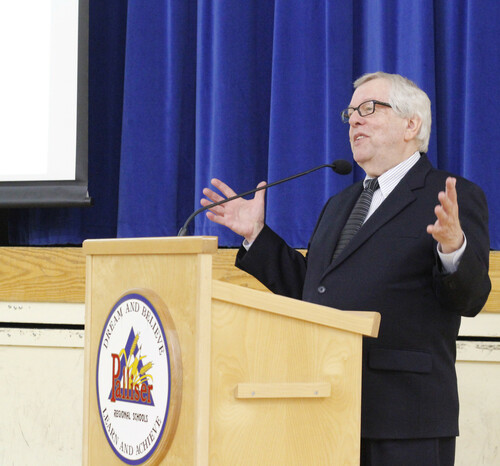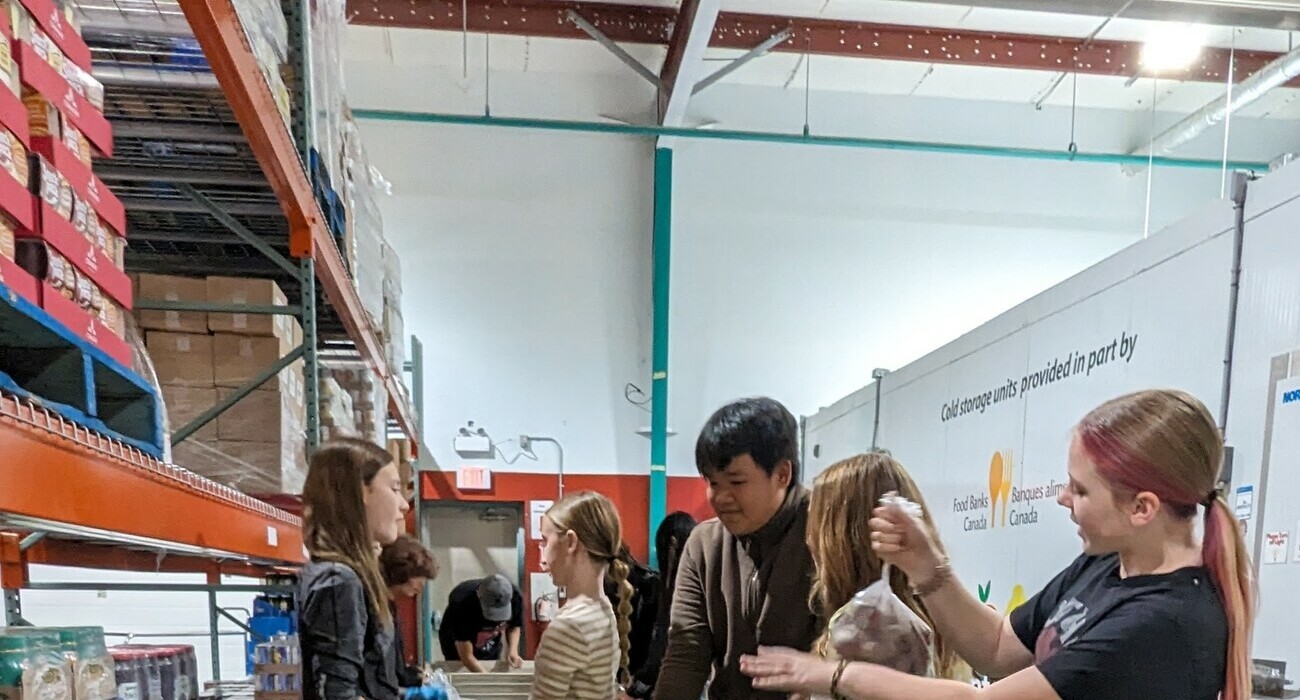
Our definition of literacy and the role of the teacher in the classroom are changing, but the goal remains the same, helping students become creative and critical thinkers, a literacy expert told Palliser teachers gathered in Vulcan Monday.
Dr. David Booth, Professor Emeritus of the Ontario Institute for Studies in Education at the University of Toronto and an internationally recognized speaker on literacy, shared inspiring experiences from classrooms he’s visited where teachers challenge students to “move one step beyond. . . one notch up.”
Booth redefined literacy as “to make the most meaning possible with this text form at this particular time and in this particular context.” The form might be a text message on a cell phone, graphic novel, film, work of art, picture or speech.
For any text to make sense, we need context for the words we encounter, he said. That context comes through our own experiences, through what we hear, see and talk about. When reading, we make connections to information we already know, select the important ideas and synthesize, summarize and analyze the information. We develop opinions and, through discussion of what we’ve read, we soon realize we don’t all share the same opinions and we don’t all think the same way, Booth said.
“These are the thinking skills you should be working on.”
He shared this quote from the National Children’s Book and Literacy Alliance: “If a democracy is to survive and prosper, it must have responsible citizens capable of creative and critical thought, with free access to information and story.”
With the Internet and devices such as smartphones and iPads, students have easy access to information just waiting to be discovered.
“We know about research and inquiry and thoughtful process,” he said. “I’m needed not to tell him but to help him find out these informational truths.”
In one classroom Booth visited, a discussion about heroes led one student to suggest Nellie McClung and her role in advancing women’s rights. The student was one of the room’s weaker readers, but in this case, he had information no one else in the room had.
In another class, a novel about girls in Afghanistan led one student to question whether conditions described in the book were exaggerated. His opinion sparked student research into Afghanistan that included inviting a Canadian soldier who served there to visit the class.
“Schools should be twice as tough and twice as fun,” Booth said. “They go together. Teachers know how to push and pull and nudge.”
The words were echoed earlier in the day by Palliser Superintendent Kevin Gietz, who congratulated teachers for their literacy work.
“Through literacy, we are unleashing the leadership potential of our students in ways we can’t count and with positive outcomes we can’t predict,” Gietz said. “In your classroom, you are the game changer.”
Benchmark assessments of Grade 2 to 6 students in Palliser this fall found one-in-four students required serious intervention in reading. This spring, that had dropped to about one-in-five. The percentage of students meeting or exceeding expectations in reading at their grade level also significantly increased.
Booth applauded Palliser’s use of the Fountas and Pinnell assessment tool which helps teachers know their students and tailor instruction to individual needs.
He questioned some traditional methods of teaching language. For students who don’t read well, taking turns reading aloud is an exercise in humiliation. Spelling lists don’t help students learn to spell. Far better, students tackle spelling as a problem solving activity, learning about root words and how words work so they learn how to spell all words, not just random, memorized lists. And comprehension questions? (“What colour was the pig’s coat? Who cares?” he said.) Instead, Booth said, the more interesting question is what would you have done in that character’s place?
Finally, he applauded the work of teachers.
“Our students are resilient. And why? Because everyone in this room gives them another chance. There is no kid you teach that you send to doom.”
Booth was the guest speaker for Palliser’s final division-wide collaboration day of the year, attended by more than 350 teachers from across Palliser. Following Booth’s presentation, teachers worked in their small professional learning teams.

